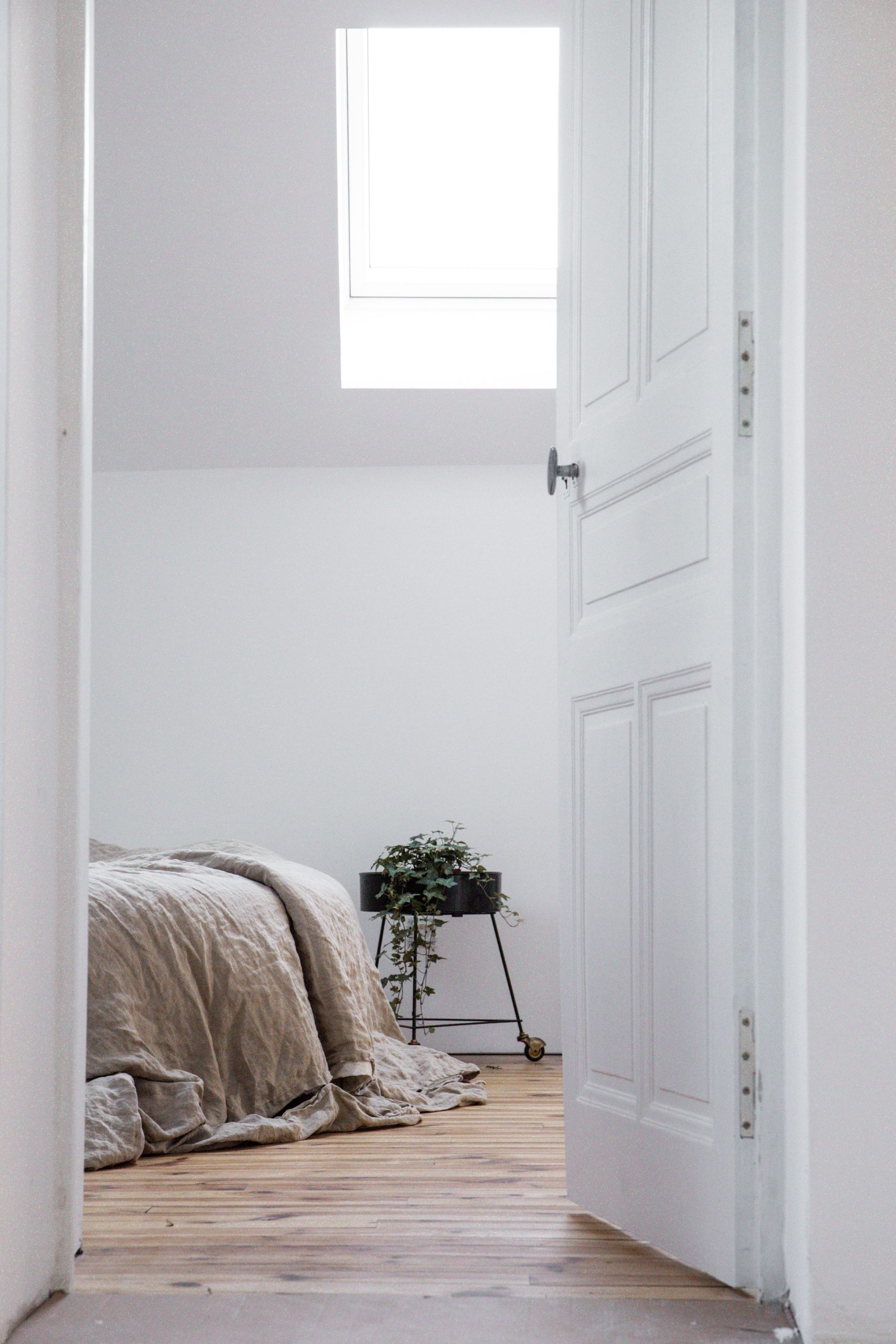What happens behind closed doors…

What happens behind closed doors…
What happens behind closed doors…is STAGNATION! When you close the door to a room in your home, air is trapped in the room, resulting in the following:
If there is no fan operating, air will not circulate, and any humidity present in the air will saturate soft furnishings, increasing the likelihood that mold will grow (see our article on ventilation and one of our favorite tools, dpcalc.org).
If central air conditioning or heating is pushing air into the room, the closed door prevents proper cycling of air out of the room, causing the system to a create a negative pressure zone near the return grille and placing stress on the system’s mechanical parts like blower motors.
Again, central air conditioning or heating with closed doors causes imbalances in the temperature of the home, because conditioned air is prevented from mixing, which in turn affects the thermostat and causes the system to run longer to reach the temperature set point.
Keeping doors closed, in other words, is just not good for proper ventilation in your home! This makes sense to us…until the question of privacy is brought up. Of course, not everyone wants their door to be open at all times, even if it’s just cracked open. Don’t worry, there are ways to get good ventilation even with closed doors!
The best solutions are brought in during the design phase of the home, before construction begins. This is where our first idea is best incorporated. Transfer grilles offset high/low in a wall cavity use the cavity to muffle sound, so that this design affords the maximum privacy. However, in order to avoid entraining dust and other building toxins from surrounding spaces, the cavity needs to be sealed by gluing the drywall to the studs and plates…meaning that this solution needs to be built in during construction.
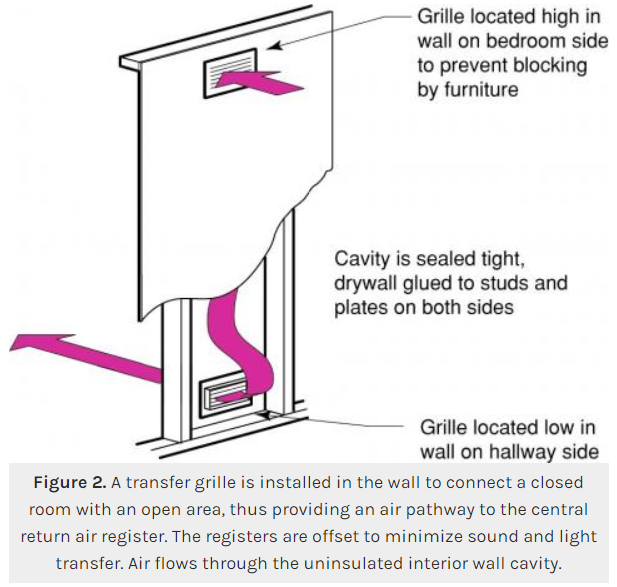
Source: Building America Solution Center
If you’re realizing you need better air circulation after construction, then there are still more solutions to consider. You can use a back-to-back grille over a door (or any high space on a shared wall), which have sheet metal baffles to block sound and light while still allowing the passage of air through the wall. Here are some diagrams to show back-to-back grilles:
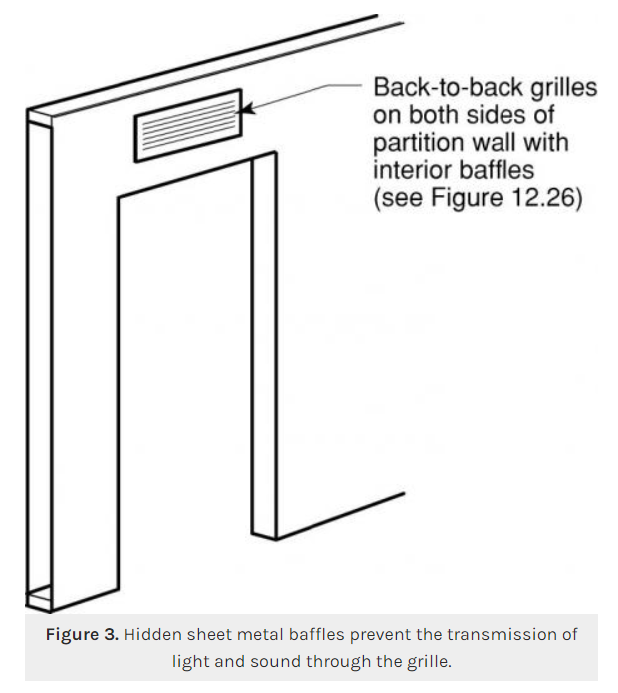
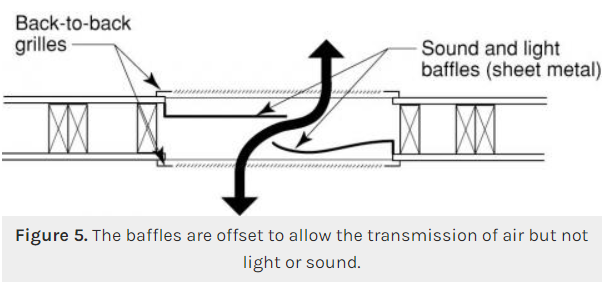
Source: Building America Solution Center
Thirdly, if wall space is an issue and you have attic space above the rooms, you could install a jump duct using flexible duct, two ceiling grilles, and foam sealant (to make sure air from the attic does not leak into your home). Theoretically, a jump duct could also be placed through/under the floor to bridge two spaces, but in either place, take care to make sure the flexible duct is not crimped, and do not cut any structural beams like rafters or joists to install it.

Source: Building America Solution Center
Lastly, there’s a solution which I consider to be the easiest of all of these. In-Door Return Air Pathways by Tamarack Technology are easily installed in the bottom of your hollow-core or solid wood interior doors (door must be 1-3/8” thick to fit). Simply remove the door from the frame (I find that tapping the hinge pins out is easiest), lay it down, trace the provided template on the bottom of the door, cut it with a jigsaw, install the grille with two screws (provided) and re-install the door. They do provide less privacy than the previous two options, but are quick to install (less than 30 minutes in my experience) and can be left white or spray painted to match any door color with paint suitable for plastic.
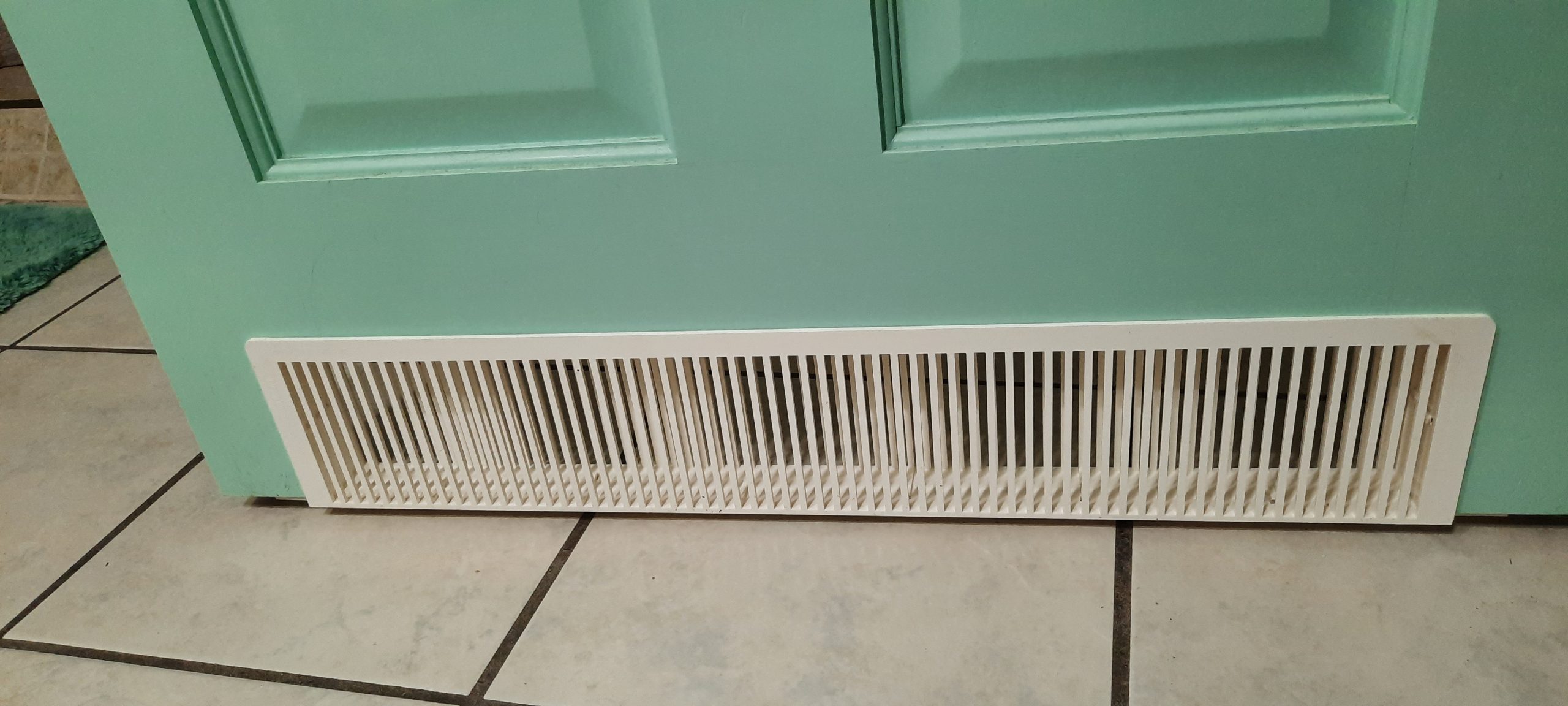
In-Door Return Air Pathway installed in a solid wood door.
When you have the door closed with any of these three solutions, air is free to mix with the rest of the home, rooms do not become positively or negatively pressured, and you definitely have an advantage in keeping mold from forming in that room. Additionally, the continuous use of the following in the closed room costs very little energy, but boosts your mold protection even more:
A ceiling fan or portable fan on low speed
A Germ Defender, Upgraded Air Angel Mobile or Whole Home Polar Ionizer (installed in central AC)
A humidity sensor will let you know where you stand with relative humidity
Sure, we get it…everyone needs their privacy, but for health’s sake, make sure the air is flowing freely!
